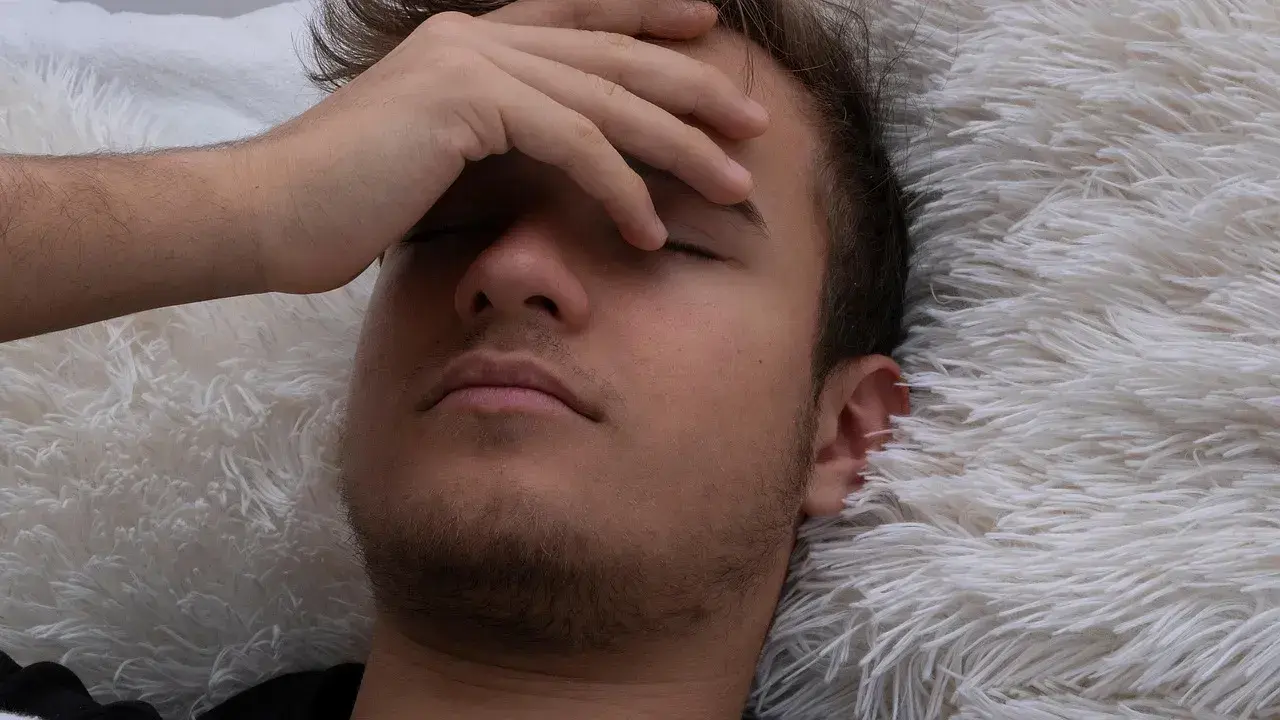Waking up with heel pain can make you wonder if it’s just a minor issue or something more serious. While most heel pain stems from common problems like plantar fasciitis or strain, persistent discomfort often raises bigger questions, like Is heel pain a sign of cancer?
It’s natural to feel anxious when everyday aches spark fears about serious illnesses. In this article, we’ll explore what medical experts say about heel pain, when it’s typically harmless, and the rare cases where it may be linked to cancer.
Is Heel Pain a Sign of Cancer?
Yes, but in extremely rare cases. Unexplained or persistent heel pain, accompanied by other symptoms, like fatigue and weight loss, can be a sign of cancer. It can indicate that cancer has reached the bones and started affecting the musculoskeletal system. The following types of cancer can cause heel pain in most cases:
1. Bone Cancer (Sarcoma)
Examples include Ewing’s sarcoma or Osteosarcoma that can impact the heel bone, called calcaneus (a large bone forming the heel).
Symptoms of bone cancer may include deep, constant, and aching pain, a visible lump around the heel, and swelling.
2. Metastatic Cancer
Cancers from the body's other parts, such as the breast, prostate, or lung, can sometimes spread to the heel bone. This generally happens in the advanced stages of cancer.
Bone metastasis (spreading of cancerous cells to the bones) is the first symptom of lung cancer, which causes chronic heel pain.
3. Soft Tissue Cancer (Sarcoma)
A rare cancer that can grow in the soft tissues (such as muscles and fats) around the heel and can strain the bones or nerves in the foot.
Can cause aching pain, tenderness, and swelling in the foot or heel, and pain may not be reduced by medicine or rest.
4. Blood Cancer (Leukemia)
The type of blood cancer that develops due to the accumulation of cancer cells in the bone marrow, creating inflammation and pressure within the bone, including the heel.
Can cause deep, dull, and persistent pain that occurs even while resting.
If you experience pain in your heel that lasts for longer than a few weeks, accompanied by swelling, fever, or redness, and increases with activity, consult a doctor for proper diagnosis and treatment.
Is Heel Pain a Sign of Breast Cancer?
No, heel pain does not indicate breast cancer. But in rare cases, it can develop as a potential symptom of bone metastasis in the later stages of breast cancer, where the cancerous cells spread to the bones.
Symptoms of Metastatic Breast Cancer:
Persistent pain that doesn't subside with rest
Pain that increases at night or with any physical activity
Redness or swelling in the heel
Mass or lump in the heel
Other Symptoms may include:
Bone pain in other body parts, such as the pelvis, ribs, and spine
Fatigue and weight loss
Nausea and vomiting
Important Note:
If you have experienced breast cancer before and feel deep and aching pain in your heel that does not improve with rest, see a doctor immediately.
If you feel pain in your heel along with symptoms of metastatic breast cancer, immediately seek medical help for proper diagnosis and treatment.
Real Cases of Cancer Showing Heel Pain as a Cancer Sign
The following studies show a few cases of heel pain as the first warning sign of cancer:
A 2014 study shows that a 58-year-old woman experienced heel pain for 6 months while standing and walking. The pain was initially thought to be related to plantar fasciitis. But X-ray results showed lung cancer as the reason for the pain due to the spread of the cancer to her heel bone.
Another 2017 study reported that a 63-year-old man who experienced heel pain was first diagnosed and treated for plantar fasciitis. Then, after some time, he was treated for gout, before the healthcare professionals found lung cancer as the reason for heel pain.
These are very cases, but tell why the medical professionals need to monitor deeper and more closely when the heel pain does not improve with traditional methods.
Symptoms of Cancer-Related Heel Pain
The following are the warning signs that may indicate the chances of cancer. See medical attention immediately if you notice:
Pain that does not improve: Tumor may be developing
Pain that worsens at nighttime: Could indicate bone cancer
Swelling or redness near the heel without injury: May be a mass or tumor
Bone pain in other body areas: Might be leukemia or another type of blood cancer
Unexplained weight loss or tiredness: Could be a cancer
Small lump near the heel: Could be a sign of soft tissue tumor
Other Concerning Signs
Unable to put any weight on the foot
Have a fever along with heel pain
feels numbness and tingling sensation in the foot
Unable to move the foot normally
How Cancer-Associated Heel Pain Feels Different?
Unlike other common causes of heel pain, such as a strained tendon or plantar fasciitis, heel pain related to cancer usually:
does not improve with stretching or activities
keep increasing over time
feels deep and strongly throbbing
may be accompanied by other unusual symptoms
How Cancer-Associated Heel Pain Differs from Common Heel Pain?
Feature | Cancer-Related Heel Pain | Common Heel Pain |
|---|---|---|
Cause | Growth of a tumor in the bone or nearby tissues | Overuse of the foot, improper footwear, inflammation, and repetitive stress |
Pain Pattern | Dull, constant, aching, or deep pain that lasts throughout the day or may worsen at night | Stabbing or sharp pain, particularly with the first steps in the morning and after rest |
Pain Progression | Worsens with time and is often little or not responsive to standard treatments | Gradually resolves with rest, stretches, or other treatments |
Location of Pain | May develop in any part of the heel, sometimes with a lump or localized swelling | Typically, near the Achilles tendon or at the bottom of the heel |
Associated Symptoms | Swelling, visible lump, unexplained weight loss, fatigue, warmth, or night sweats | Stiffness, tenderness, or mild swelling |
Response to Activity | Heel pain may persist or worsen during the night or while resting | Heel pain may intensify with activity but subsides with rest |
Urgency of Medical Evaluation | Needs immediate medical evaluation to detect malignancy (presence of cancer) | Generally not urgent unless it persists |
Risk Factors for Cancer in the Heel
Understanding the potential risk factors can help evaluate your concerns:
Age: Some types of bone cancer, such as chondrosarcoma, are more common in young adults, while others, such as Ewing's sarcoma, are more common in adolescents and children.
Previous history of cancer: People with a cancer history may have a high risk of metastatic cancer.
Previous chemotherapy or radiation treatment: Individuals undergone chemotherapy or radiation treatment have an increased chance of developing bone cancer after some years.
Genetic conditions: Some inherited conditions, such as Li-Fraumeni syndrome, multiple enchondromatosis, multiple exostoses, or hereditary retinoblastoma, increase the risk of bone cancer.
Weak immune system: A weak immune system is also a great risk factor for some types of cancers, as the immune cells are unable to identify and kill cancerous cells before they turn into a tumor.
Other bone conditions: Having bone disease, such as multiple hereditary exostoses or Paget's disease, can increase the risk of a bone tumor, though it occurs in rare cases.
When to See a Doctor?
Consult a healthcare professional or podiatrist if the pain in your heel:
lasts for more than 2 to 3 weeks
becomes severe or worsening even after ice therapy, rest, or supportive shoes
impacts your ability to bear weight or walk
interrupts your sleep
accompanies other unexplained symptoms, like fever, fatigue, weight loss, etc.
The doctors can help with proper diagnostic tests to rule out whether cancer is causing heel pain.
How is Cancer-Related Heel Pain Diagnosed?
If pain doesn't subside with rest, ice, or other traditional methods, the doctor treats it with special attention, especially if the pain comes along with other symptoms, like fatigue, weight loss, etc. The providers may first examine your symptoms and ask about your medical and family history and daily habits.
If there is a possibility of cancer, they may order the following diagnostic tests:
1. Magnetic Resonance Imaging (MRI) Scan:
Detects inflammation, tumors, or unusual tissue growth in and near the heel.
Helps know whether the cancer has spread to nearby tissues.
2. X-ray
Detects bone abnormalities by showing bone lesions or destructive changes related to bone cancer.
Help spot bone tumors.
3. Bone Scan
Identifies bone metastasis by highlighting the areas of high bone activity.
Assist in spotting many sites of cancer in the skeletal system.
4. CT Scan
Detects masses, bone damage, or spread of cancer in more detail compared to X-rays.
Helpful for determining the need for a biopsy.
5. Biopsy
Helps confirm the cancer by examining the bone or tissue taken from the heel.
Check for tumors or cancerous cells.
If something is unusual, the doctors work with an oncologist, the cancer specialist, for a proper treatment plan.
What Are the Common Heel Pain Causes? (Non-Cancerous Causes)
Heel pain is rarely linked to the sign of cancer. Non-cancerous health conditions are the most common reasons behind heel pain. Those causes include:
Plantar Fasciitis: Inflammation of the plantar fascia, a thick band of tissue that runs across the bottom of your foot.
Heel Spurs: Accumulation of calcium causing growth on the underside of the heel bone that can develop when the plantar fascia pulls excessively on the heel.
Achilles Tendinitis: Inflammation of the Achilles tendon, a tissue that connects calf muscles on the back lower leg to the heel bone.
Bursitis: Inflammation of the bursa, a small fluid-filled sac at the back of the heel.
Stress Fractures: Small breaks in the heel bone, often caused by repetitive stress, overuse, or heavy impact.
Trapped Nerve: Compression or trapping of a nerve around the heel can cause a sharp, shooting pain.
These foot-related conditions are generally treatable with ice therapy, rest, orthotics, physical therapy, or anti-inflammatory medicines. But if the heel pain does not improve, do not ignore it. Talk to a doctor for the proper medical evaluation and treatment.
Effective Treatment Options
For Non-Cancerous Heel Pain:
The conservative treatments and, in some cases, invasive approaches or surgery can help relieve heel pain:
Conservative Approaches | Invasive Approaches |
|---|---|
Rest and ice- Limiting activity and using cold packs can help reduce inflammation as well as ease painful sensations. | Corticosteroid injections- The steroid shots that can help decrease swelling around the area and relieve aches temporarily. |
Physical therapy- Exercises to stretch and strengthen the foot can improve mobility and reduce pain | Plantar fascia release surgery- involves cutting part of the plantar fascia ligament to relieve tension and pain |
Orthotic devices- Custom or over-the-counter supports can correct structural issues and distribute pressure evenly. | Extracorporeal shock wave therapy ESWT- Uses sound waves to stimulate healing in the heel. |
Anti-inflammatory medications- Nonsteroidal anti-inflammatory drugs NSAIDs can help reduce pain and swelling. | Radiofrequency ablation- Destroys nerve tissue to reduce pain signals. |
Proper footwear- Shoes that provide good arch support and cushioning can prevent further irritation. | Bone spur removal- Surgery to remove spurs that are aggravating the heel. |
Activity modification- Avoiding activities that exacerbate the pain is crucial. | Heel reconstruction- In cases of severe deformity or damage, reconstructive surgery may be necessary. |
For Cancer-Related Heel Pain
The treatment basically depends on the stage and type of cancer:
Treatment | Benefits |
|---|---|
Pain Management Strategies |
|
Chemotherapy |
|
Radiation Therapy |
|
Surgical Intervention |
|
Tips to Prevent Heel Pain and Keep Your Heels Healthy
Though all types of heel pain can't be prevented, the following tips can reduce the risk:
Wear supportive footwear that fits properly and supports the arches.
Avoid wearing worn-out shoes if you are an athlete.
Maintain a healthy body weight to avoid strain on the feet during movement.
Stretch your feet and calves regularly to reduce stress on the heel.
Take rest when required to avoid discomfort.
Avoid walking barefoot on rough floors or surfaces to lower strain on the heel.
Do warm up before performing exercises to prevent injuries related to overuse of muscles.
Get regular checkups to catch issues early.
Final Thoughts
So, is heel pain a sign of cancer? In most cases, no, it’s rarely linked to cancer and is usually caused by common, non-cancerous conditions like plantar fasciitis or heel spurs. However, persistent heel pain that doesn’t improve, especially when accompanied by symptoms such as unexplained weight loss, fatigue, or swelling, may need further evaluation.
If you’re experiencing these concerning signs, consult a doctor promptly. Early diagnosis not only rules out serious conditions like cancer but also helps treat the more common causes of heel pain effectively.
Disclaimer: This information is only intended for educational purposes and shouldn't replace medical advice. Always see a doctor for a proper diagnosis and treatment plan.
अक्सर पूछे जाने वाले प्रश्नों
Is cancer most likely to cause heel pain?
No, most cases associated with heel pain are caused by stress fractures, plantar fasciitis, or tendinopathy.
Can chemotherapy cause heel pain?
Yes, it can. Due to certain side effects of chemotherapy, such as nerve damage, leading to tingling, weakness, and numbness, which contribute to heel pain or discomfort.
What are red flags in heel pain?
Sharp, shooting pain in the pain, along with numbness and tingling sensations, can be the red flags that require further investigation.
Is cancer-related heel pain preventable?
It can't be prevented directly, but early diagnosis and treatment can lower the risk and severity.
Can a heel tumor be benign?
Yes, bone tumors (such as lipomas or bone cysts) can be benign (non-cancerous). However, they still need an appropriate medical evaluation.
Can chemotherapy cause heel pain?
Yes, it can weaken the bone and cause peripheral neuropathy, which can contribute to heel pain or discomfort.
लेखक





